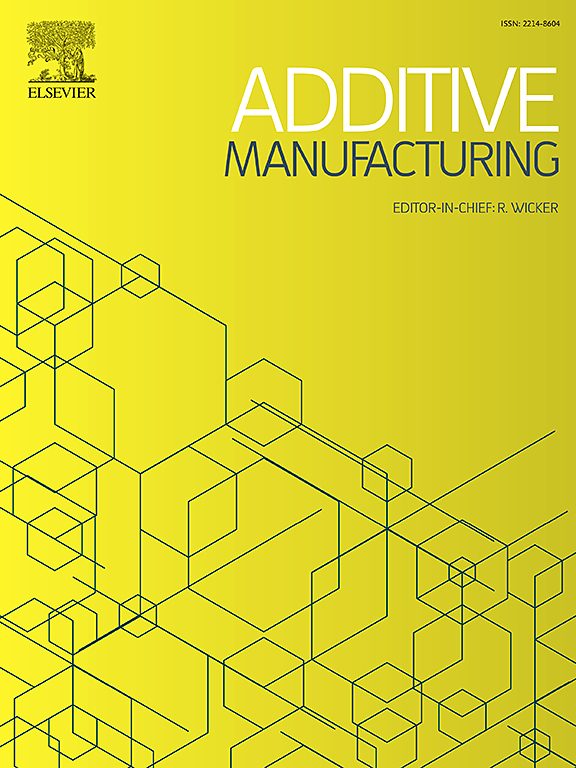z-GrAdd – Facile fabrication of various functional gradient materials by 3D printing using the gradual addition of reagents
IF 10.3
1区 工程技术
Q1 ENGINEERING, MANUFACTURING
引用次数: 0
Abstract
Control over physical and chemical properties during additive manufacturing is highly advantageous for fabricating functional gradient materials (FGM) with diverse applications. Conventional methods like vat exchange or grayscale light projection are often limited in producing graded properties or compositional gradients and they suffer from slow speed and complicated setups. Here, we present the z-GrAdd (z-Gradient by Addition of a reagent) method, a facile method for Digital Light Processing (DLP)-based vat photopolymerization of FGMs in a single structure through the gradual addition of a resin component to the vat during printing. The z-GrAdd enables continuous alteration of resin composition during the printing, resulting in gradient properties in z-direction. We demonstrate FGM fabrication with gradients of surface energy, porosity, and hardness using a range of acrylate-based resins. Surface energy gradients (18–29 mN/m) and hardness gradients (19.2–29.6 shore D) were achieved by gradual variation of the hydrophilic monomer and crosslinker content, respectively. Porosity was modulated by gradual increase in porogen (non-solvent) which implied polymerization-induced phase separation, resulting in a pore size increase and a corresponding roughness between 52–401 nm (Sq). The versatility of the FGMs with wettability gradients was shown for passive droplet manipulation and liquid imbibition control. To further highlight the versatility of the z-GrAdd for fabricating different gradients, structures with ascending and descending hardness gradients by consecutive addition of two different reagents were produced. In conclusion, z-GrAdd is suitable for various acrylate-based compositions allowing for an easy cost-effective implementation, and fabrication of a wide variety of applications.
求助全文
约1分钟内获得全文
求助全文
来源期刊

Additive manufacturing
Materials Science-General Materials Science
CiteScore
19.80
自引率
12.70%
发文量
648
审稿时长
35 days
期刊介绍:
Additive Manufacturing stands as a peer-reviewed journal dedicated to delivering high-quality research papers and reviews in the field of additive manufacturing, serving both academia and industry leaders. The journal's objective is to recognize the innovative essence of additive manufacturing and its diverse applications, providing a comprehensive overview of current developments and future prospects.
The transformative potential of additive manufacturing technologies in product design and manufacturing is poised to disrupt traditional approaches. In response to this paradigm shift, a distinctive and comprehensive publication outlet was essential. Additive Manufacturing fulfills this need, offering a platform for engineers, materials scientists, and practitioners across academia and various industries to document and share innovations in these evolving technologies.
 求助内容:
求助内容: 应助结果提醒方式:
应助结果提醒方式:


